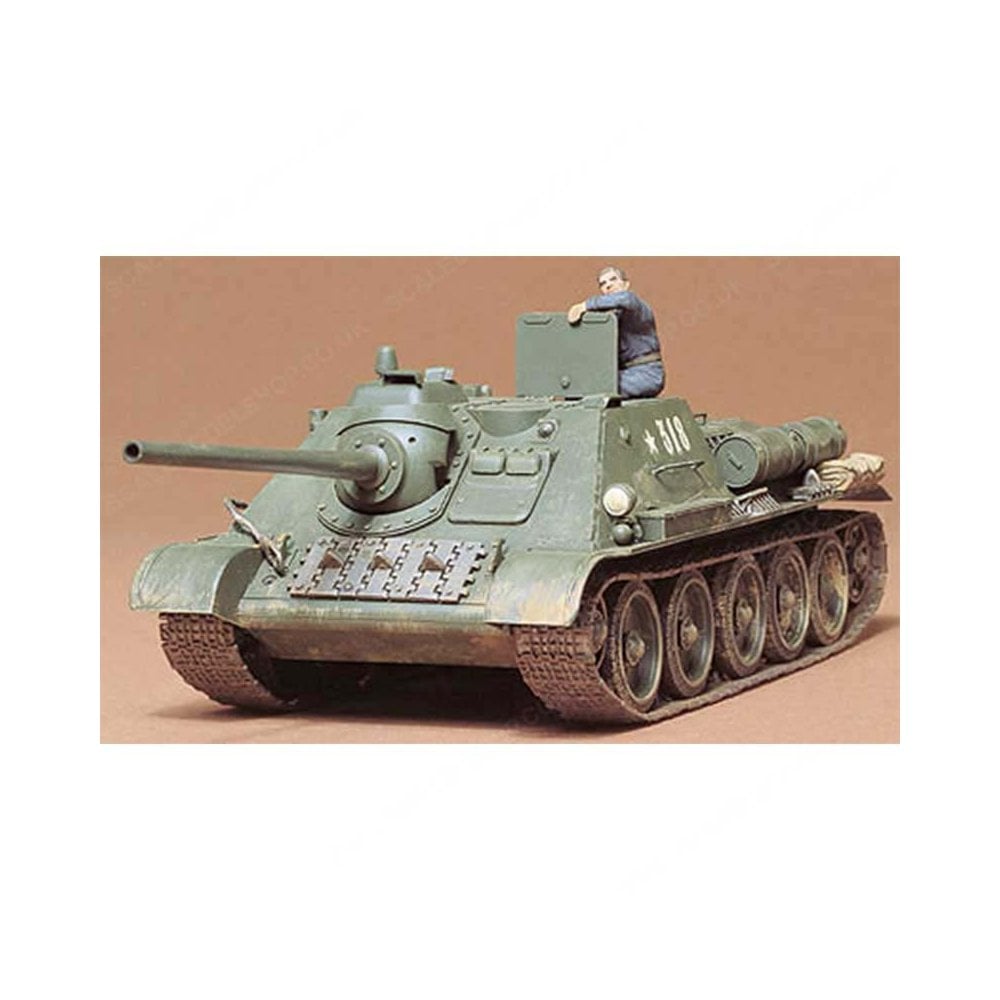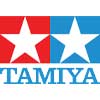£24.99 Original price was: £24.99.£22.49Current price is: £22.49.
1/35 Russian SU-85 Tamiya 35072
Out of stock
1/35 Russian SU-85 Tamiya 35072
In the German-Soviet war which began with the German surprise attack, the Russians were forced to fight under great difficulty and disadvantage from the start. The Germans made fierce attacks by the “blitzkrieg” tactics which had been polished on the basis of experience in their French campaign, and their soldiers workded with the precision of machinery and acted as promptly as hounds. The Germans carried out so to speak pincer operations with their panzer units as the main body and set a huge iron ring against the Russians. The collapse of communication system, confusion of command net and loss of the air superiority increased damage to the Russian ground troops.
There were two German weapons which gave the most indelible impression on Russian soldiers. One of them was the U-78 Stuka which had already proved itself to be an effective dive bomber in the French campaign. Planes of this type saturated Russian targets while diving steeply and skimming over the gorund with a whirr that sounded like a “shriek in hell”. The other was the Strumgeschuetz III which destroyed Russian tochkas one after another to support infantry units. The Russians were not without tanks similar in use to the German Sturmgeschuetz. They had the KV-II heavy tank which was nicknamed “Gigant” by German infantrymen. Because this tank was too heavy to make quick movement and had a very high silhouette, however, it could not steal near enemy positions to destroy them. In addition, the number of this type were so small as to concentrate their powerful 152mm gun fire sufficiently on the target.
After checking the German advance in front of Moscow, the Russians formed early in 1942 a plan for the mass production of tanks and guns for counter offensive. Of all tanks to be produced under the plan, about 70% were T-34 mediums and the remaining 30% consisited of KV-1 heavy tanks and light tanks. Guns to be produced consisted of “small calibre” (76.2 mm) guns, “medium calibre” (85- 100 mm) guns and “large calibre” (122 mm) guns. These weapons were to be immediately sent to the battlefield in large quantities.
Judging from this plan, the Russians must have already expected in those days to mount the 122 mm, 100 mm or 85 mm gun on the chassis of the T-34 tank. As they knew the power of the German Sturmgeschuetz by reports from the front, the Russians naturally crystallized their own idea of assualt guns. The Soviet Union’s first assault gun to be produced was a self-propelled gun with 122 mm howitzer called “SU-122”. The “SU” (or “CY” in Russian letters)is an abbreviation for Russian “Samokhodnaya Ustanovka” which means “self propelled gun”. The Russians called such turretless tanks by the general name of self propelled gun.
The SU-122 self propelled gun was designed by engineer E.W. Wilniszczikov with the assistance of F.F. Pietrov, the king of Russian gun designers, who had designed the 122 mm gun. This was an excellent howitzer and called “M-30S” by the Russians. It had a range of 11,800 m, muzzle velocity of 515 m/sec and rate of fire of 5 or 6 rounds/min. The SU-122 self propelled gun was similar in shape to the German Sturmgeschuetz III armed with the short barrelled 75 mm gun. With projecting bulky recoil mechanism, the SU-122 did not look well at all. The final production model, however, had the forceful Russian style with polished semi spherical recoil mechanism and shields employed instead of the previous unshapely ones.
The SU-122 self propelled gun first saw action in the Battle of Kursk in the summer of 1943. SU-122’s, then forming a part of Russian artillery, took part in the recapture of Orel to the north of Kursk and in the subsequent pursuit actions
Meanwhile, in the kombinat, called “Tankgrad”, of tank production plants near the Ural Mountains, engineers with L.S. Troyanov and S.N. Machonia as the leaders were designing a new self propelled gun which was to mount a long barrelled (51.5 calibres long) 85 mm gun instead of the 122 mm howitzer. The 85 mm gun was an anti tank weapon remodelled from the anti aircraft gun D-5 designed by Pietrov in 1939.
The remodelling was made by Pietrov himself and the gun was named “D-5S-85A”. It is very interesting to note that the new self propelled gun named “SU-85” was the very same as the German heavy tank VI Tiger in mounting a remodelled version of anti aircraft gun. That is, the German Tiger carried a tank gun remodelled from the 88 mm anti aircraft gun, the last trump card that the Germans used against Russian heavy tanks. With 9.02 kg armour piercing rounds, the D-5S-85A tank gun had a muzzle velocity of 792 m/sec and was powerful enough to penetrate 100 mm vertical armour plate at a distance of 1,000 m. It had a field of fire of 20 degrees in azimuth and from minus 5 degrees to plus 25 degrees in elevation. The rate of fire is said to have been 8 to 10 rounds/min. The crew consisted of 4 men. The commander was in the protuberant cupola on the frontal right and could see outside through the rotating periscope and vision slits. The cupola was later replaced by the hatch type with cylindrical vision holes that was seen on T-34/76 tanks of 1943 and later models.
The gunner was at the left of the gun and the loader was behind the commander. The driver hemmed in by 85 mm ammunition sat on the forward left side as before.
Thus, the SU-85 self propelled gun was a powerful anti tank weapon worthy of being called tank destroyer or Jagdpanzer in German rather than self propelled gun. The Russian masterpiece self propelled gun SU-85 was not in time for the decisive battle near Kursk. It first saw service in the pursuit action in December 1943 after the liberation of Kiev and confronted the German medium tank Panther and heavy tank Tiger.
The Russians incorporated 21 vehicles of this type into the self propelled artillery battalion under direct control of the corps and 31 into the self propelled artillery regiment under direct control of the tank army, so that the commanders could use them at their will.
In mid 1944, the SU-85 gave place to the SU-100 self propelled gun, the last model in the SU series that carried the 100mm gun on the T-34 chassis. After that, the SU-85 self propelled gun continued service as part of the tank battalion.
- Royal Mail Tracked (Standard)** (£3.89) 2-3 Working Days***
- Royal Mail Tracked (Express)** (£5.99) 1-2 Working Days***
- FedEx (£8.99) Next Working Day***
- Free – 2-6 Working Days*
** Limited to maximum weight of 2kg *** These are not guaranteed delivery times and delays are possible
*Free delivery is subject to restrictions, orders between £60-£99.99 containing products that can only shipped with Royal Mail. Orders that include products like aerosols, large quantity of flammable products or over maximum size and weight allowed by Royal Mail will not be sent free and are subject to a carriage charge, Orders over £100 are not subject to restrictions and apply to UK Mainland only. Orders containing hazardous or oversized goods cannot be shipped to NI, IOM, IOW, Highlands, these are excluded from our free shipping.
Order cutoff times - Monday 11am, Tuesday to Friday 12pm.
Order processing days Monday-Friday
Working days are Monday to Friday and do not include weekends


